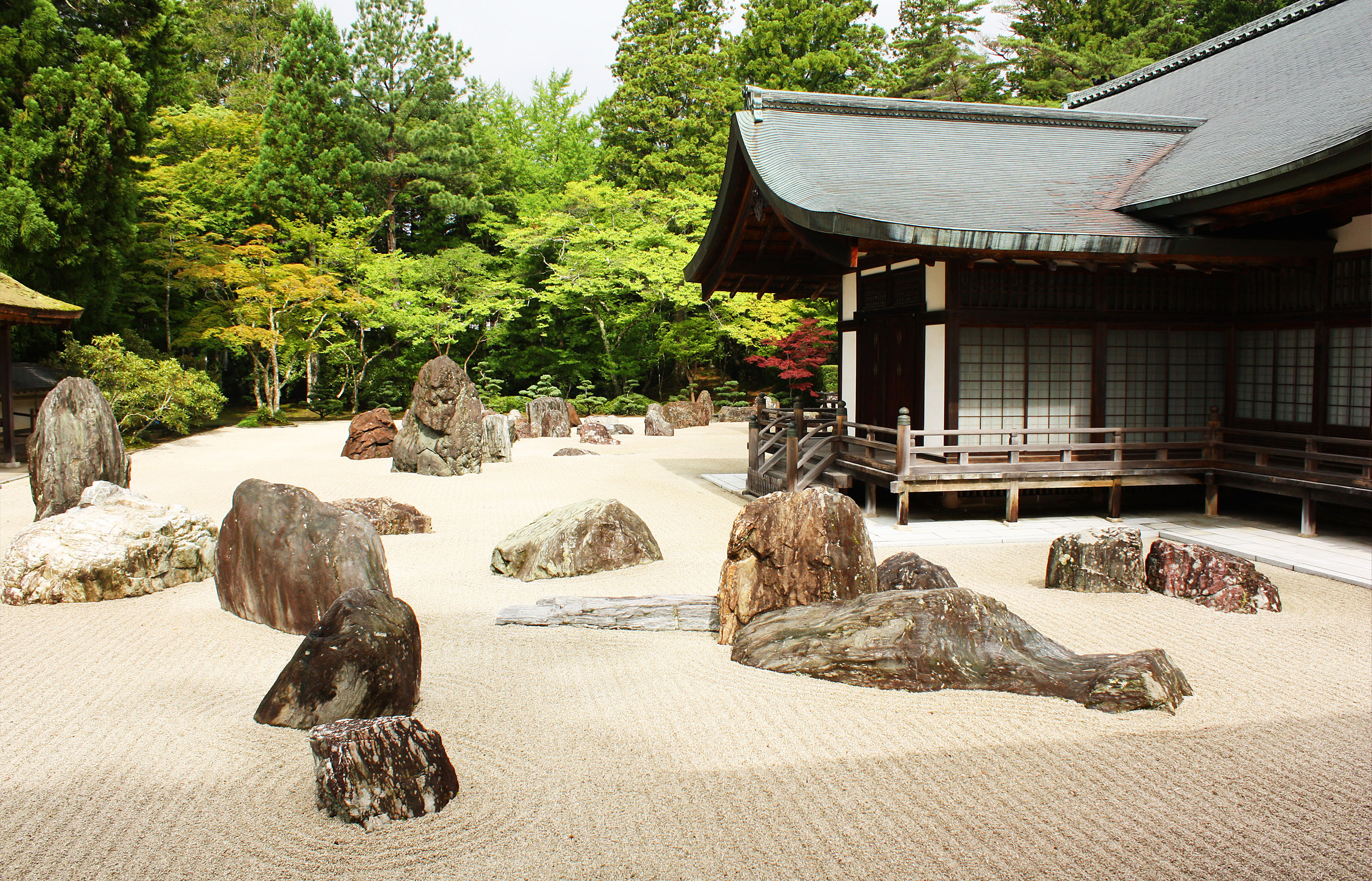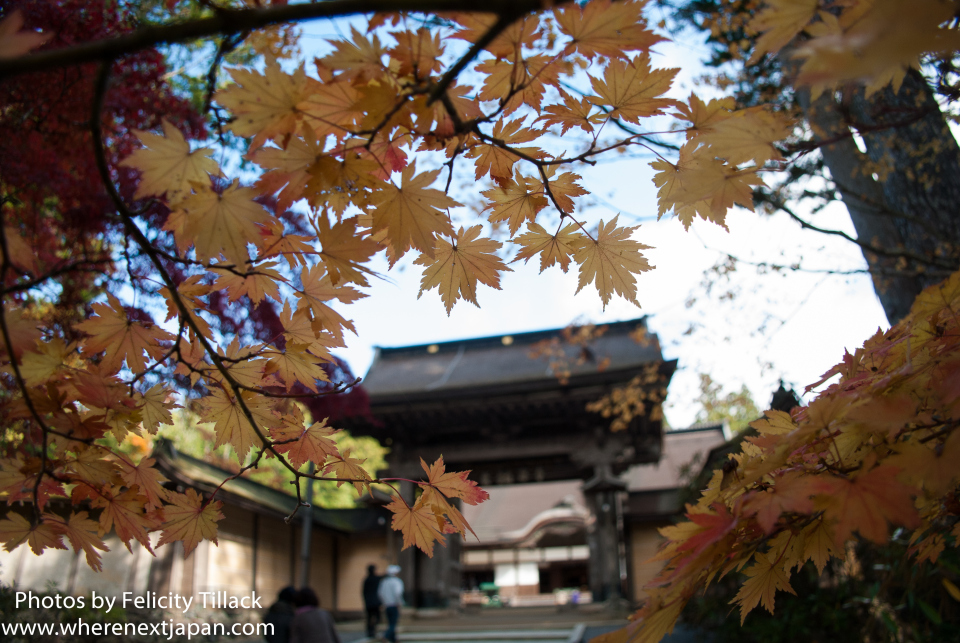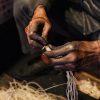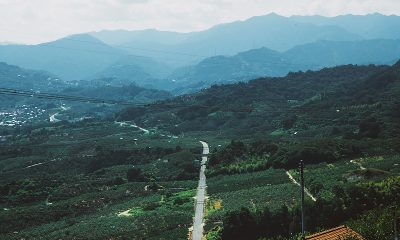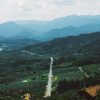Featured
Visit the spirits in the sky
The sacred mountain top temple town of Koya-san has evolved for over twelve centuries in blissful isolation from the clamour of hectic modern Japan.
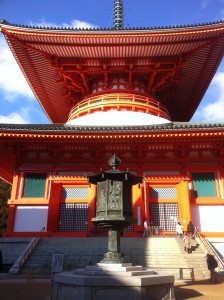 The approach to Koya-san, Wakayama-ken, is enough to get anyone in the mood for a spot of mountaintop spiritualism. About an hour out the train plunges into a series of steep-sided,densely-wooded mountains that will glue your nose to the window as Japan’s ethereal natural character begins to wash over you. The final ascent to the mountaintop temple town is via a funicular railway – essentially a stepped train carriage that is pulled up a narrow mountainside track by a metal cable – and the journey, although not too long, is enough to make it feel like a pilgrimage. As is typical of Japan there is a bus to take you the last couple of kilometres and, unless you take the rather long and out-of-the-way “walking road”, this is your only choice as walking is prohibited on the bus route.
The approach to Koya-san, Wakayama-ken, is enough to get anyone in the mood for a spot of mountaintop spiritualism. About an hour out the train plunges into a series of steep-sided,densely-wooded mountains that will glue your nose to the window as Japan’s ethereal natural character begins to wash over you. The final ascent to the mountaintop temple town is via a funicular railway – essentially a stepped train carriage that is pulled up a narrow mountainside track by a metal cable – and the journey, although not too long, is enough to make it feel like a pilgrimage. As is typical of Japan there is a bus to take you the last couple of kilometres and, unless you take the rather long and out-of-the-way “walking road”, this is your only choice as walking is prohibited on the bus route.
Koya-san was established as the centre of Shingon Esoteric Buddhism by Kukai (known as Kobo Daishi after his death) in 816. Kongobu-ji, at the centre of Koya-san, still maintains this role and now resides over 10 million Shingon Buddhists and nearly 4000 temples scattered across Japan. Kobo Daishi is one of Japan’s most revered spiritual leaders and is in fact considered to reside in a permanent state of meditation in his mausoleum, hidden away at the back of Toro-do(Lantern Hall), in Oku-no-in. The hall’s thousands of lanterns, some owhich have possibly been burning for over 900 years, make ione of Koya-san’s greatest attractions for the secular tourist.
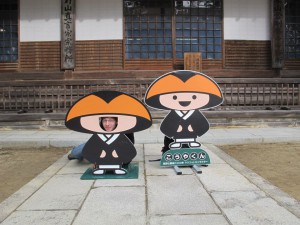
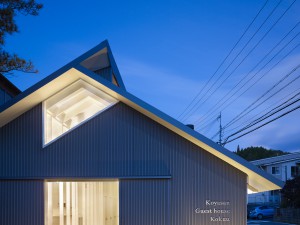 Kongobu-ji, however, is the main draw for Japanese Bud-dhists and is considered a major site of pilgrimage for those of the Shingon sect. The present structure was built towards the end of the 19th century but still boasts fabulous ornate screens from the 16th century as well as Japan’s largest rock garden. If you have a hard time appreciating rock gardens this one might convince you of their ability to instill a sense of calm spiritualism – some say the rocks represent hundreds of worshipers bowing towards the temple to listen to the priest’s sermon.
Kongobu-ji, however, is the main draw for Japanese Bud-dhists and is considered a major site of pilgrimage for those of the Shingon sect. The present structure was built towards the end of the 19th century but still boasts fabulous ornate screens from the 16th century as well as Japan’s largest rock garden. If you have a hard time appreciating rock gardens this one might convince you of their ability to instill a sense of calm spiritualism – some say the rocks represent hundreds of worshipers bowing towards the temple to listen to the priest’s sermon.
A stone’s throw from Kongobu-ji is Garan – a fantastic temple complex housing some of Koya-san’s oldest buildings. Legend has it that Kukai, while studying in China, threw his sankosho(a three pronged buddhist ceremonial tool) towards Japan and later, while traveling, discovered the tool speared into a pine tree on Koya-san. There he began the constructionof Garan. The vermillion pagoda (Daito) will be an awesome sight in the spring sunlight, but be sure to venture further and explore the entire compex. Although the east and west pagodas are not as imposing as Daito, they are some of the oldest surviving buildings in Japan.
After checking out the temples take a short walk down the main road to Oku-no-in. To really appreciate the hugeness of this ancient mausoleum make sure you enter via Ichino-hashi and wind along the cobbled path, which meanders for two kilometres through the massive cedar trees and ancient headstones, to Toro-do, Kukai’s final resting place. This immense graveyard is chock full of interesting tidbits from Oda Nobunaga’s grave to a coffee-cup shaped memorial remembering Ueshima Coffee Company’s past employees. Look out for a moss covered headstone, erected in 1908, on which is engraved eloquent English text that utterly puts the often comical modern museum captions and restaurant English to shame. Exploring Okunoinat anytime can be enchanting but as dusk falls so does a beguiling misty light that will make it considerably easier to accept that Kukai is sitting just out of view in eternal meditation.
The traditional way to experience Koya-san is to stay at one of the many shukubo(temple lodgings) that will provide you with a vegetarian evening meal, a futon for the night, and a rousing early morning sutra chant. This is the expensive option (around ¥12,000), but if you’re looking to enjoy the mountain’s magic for less then the newly opened Koyasan Guesthouse Kokuu is the place to stay. At around ¥3,000 a night it’s an absolute steal. Ryochi, who runs the tiny cabinesque lodging with his wife, has created a wonderful atmosphere that both compliments Koyasan’s ethereal nature and instills a feeling of youth and adventure. An evening dining on their homemade Indian curry followed by a game of UNO Extreme (in which the guests often pray to Kukai for luck) around the log burning stove is as unique an experience as you’ll find in the traditional shukubo. And if you’re up for an early start, you can make the 10 minute walk through Oku-no-in to Toro-do for the 6 am incantation. Be-ware, however, that as amount a in top island it is around five degrees colder than the lowland, so you might need a jacket. An advantage to this is that, even in May, you may still be able to see the cherry blossom.
[box]
Ways and Means
• Koya-san is not tiny but is still easily negotiated on foot. There are regular buses running from the centre of the village to the cable-car and from Garan to Oku-no-in.
• Koya-san is most easily accessed from Namba on the Nankai-Dentestu line and takes a little over 90 minutes, setting you back ¥1,230 (plus ¥760 for the rapid service). From Wakayama or Nara you can go via Hashimoto but from the Kyoto area it is best to go via Namba. All trains terminate at Gokurakubashi from where you can take the cable-car.
Where to Stay and Eat
• Koyasan guesthouse Kokuu(¥3,000) is the best value spot in town. Although you’ll be getting a curry and a game of UNO rather than a tatami and vegetarian meal, the main highlights of the temple town are still yours to explore.
www.koyasanguesthouse.com/en/
• If you want the more traditional experience then eko-in(¥10,000) is a good option as it also offers the chance to study zazen(seated meditation).
www.ekoin.jp/en/
• Dinner is easiest taken at your accommodation but if you’re looking for a sample of Koya-cuisine during the day then Hanabishi Hontenoffers a delicious vegetarian lunchtime set.
[/box]


